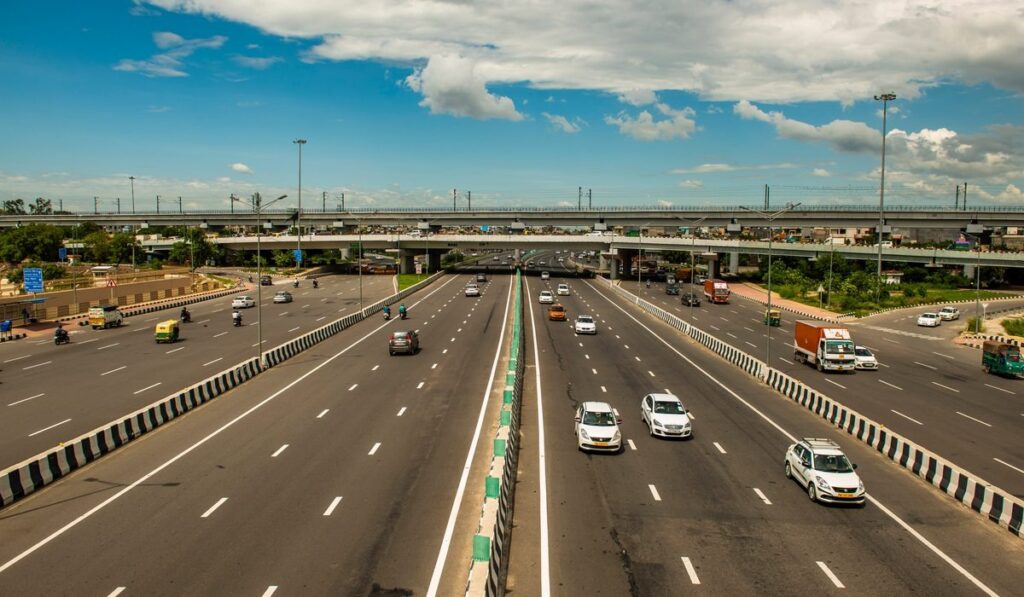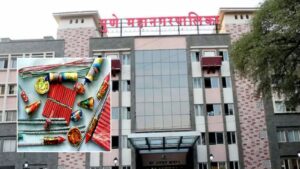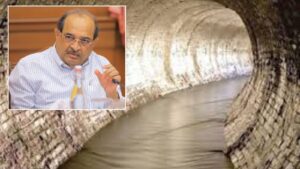The Sole Indian City Boasting 9 Expressways – A Transformation in Road Infrastructure

The Sole Indian City Boasting 9 Expressways – A Transformation in Road Infrastructure
The decision to enhance Meerut’s expressway connectivity is based on a variety of factors that render this city a prime candidate for extensive road infrastructure development.
India’s road infrastructure is advancing swiftly, with expressways significantly enhancing connectivity and driving economic development. Among the cities undergoing this transformation, one is poised to emerge as a premier transportation center, featuring nine expressways traversing its landscape. This remarkable progress will not only revolutionize mobility but also generate substantial prospects for commerce, travel, and urban growth.
Meerut, a city steeped in history and currently undergoing rapid modernization, is situated in Uttar Pradesh. Its strategic proximity to the National Capital Region (NCR) positions Meerut as one of India’s most accessible cities. The presence of nine expressways that either traverse or originate from Meerut is paving the way for it to become a significant transportation hub, thereby decreasing travel times and boosting economic activities.
The decision to enhance Meerut’s expressway connectivity is based on a variety of factors that render this city a prime candidate for extensive road infrastructure development.
Why Is Meerut Central to This Development?
The choice of Meerut for significant expressway connectivity is deliberate and strategic. Several key factors contribute to the city’s suitability for extensive road infrastructure development:
Meerut’s location near Delhi positions it as a crucial hub for the movement of travelers and goods throughout North India. The city boasts a robust industrial sector and a thriving real estate market, creating a demand for improved road connectivity. Various expressways being constructed under the Bharatmala Pariyojana and Ganga Expressway Project will traverse Meerut. As traffic continues to rise in Delhi and the NCR, the establishment of alternative high-speed routes is vital for efficient transportation.
Let’s take a look at the nine expressways that will make Meerut India’s best-connected city.
| Expressway Name | Length (km) | Connecting Cities | Current Status |
| Delhi-Meerut Expressway | 96 | Delhi, Ghaziabad, Meerut | Operational |
| Ganga Expressway | 594 | Meerut to Prayagraj | Under Construction |
| Meerut-Kanpur Expressway | 400+ | Meerut, Aligarh, Kanpur | Proposed |
| Delhi-Dehradun Expressway | 210 | Delhi, Meerut, Dehradun | Under Construction |
| Shamli-Meerut Expressway | 100+ | Shamli, Meerut | Proposed |
| Eastern Peripheral Expressway | 135 | Sonipat, Baghpat, Ghaziabad, Meerut | Operational |
| Western Peripheral Expressway | 135 | Manesar, Palwal, Sonipat | Operational |
| NH-58 (Meerut to Haridwar) | 200 | Meerut, Muzaffarnagar, Haridwar | Upgraded Highway |
| NH-334B (Meerut to Panipat) | 70 | Meerut, Baghpat, Panipat | Operational |
These expressways are designed to improve intra-state and inter-state connectivity, significantly reducing travel time between major cities.
Key Advantages of the Expressways for Meerut
The construction of these expressways is set to provide numerous benefits for Meerut and its neighboring areas:
The Delhi-Meerut Expressway has already significantly decreased the travel duration between Delhi and Meerut from 2.5 hours to a mere 45 minutes.
The forthcoming Delhi-Dehradun Expressway will shorten the travel time from Delhi to Dehradun to 2.5 hours, down from the current 6 hours.
Moreover, improved connectivity is expected to draw in businesses, logistics centers, and real estate projects. Sectors such as manufacturing, information technology, and tourism will gain from enhanced transportation options. Meerut’s strategic location along these expressways will position it as a prime choice for logistics and warehousing firms. The movement of goods between northern and central India will be streamlined.
Upgraded road infrastructure will make Meerut a more appealing destination for both residential and commercial property investments. As expressways facilitate quicker travel, Meerut may emerge as a more cost-effective alternative to the Delhi-NCR region for housing. The expressway network will also alleviate a considerable amount of traffic from current highways and local roads, thereby reducing congestion in urban areas like Delhi, Ghaziabad, and Noida.
Challenges in Expressway Development
While the plans for expressway development are ambitious, several challenges arise with these extensive infrastructure initiatives:
Securing land for expressway construction frequently encounters opposition from local property owners. Major construction activities can adversely affect ecosystems, including forests, waterways, and wildlife habitats. The financial requirements for expressway projects are substantial, and they often experience delays stemming from financial and administrative obstacles.
The expenses associated with maintaining expressways and the implementation of tolls raise concerns for everyday travelers.
Future Outlook: Will Meerut See More Expressways?
The swift development of Meerut indicates that additional infrastructure initiatives may be on the horizon. Potential projects could include:
Meerut-Lucknow Expressway: Establishing a direct connection to the capital of Uttar Pradesh.
Meerut-Jaipur Expressway: Linking Meerut with Rajasthan to enhance trade and tourism opportunities.
Meerut-Chandigarh Expressway: Improving connectivity with northern states such as Punjab and Haryana.
| This table highlights how expressway development is revolutionizing travel efficiency.Route | Travel Time Before | Travel Time After |
| Delhi to Meerut | 2.5 hours | 45 minutes |
| Meerut to Dehradun | 6 hours | 2.5 hours |
| Meerut to Prayagraj | 10+ hours | 6 hours |
| Meerut to Kanpur | 7+ hours | 4 hours |












